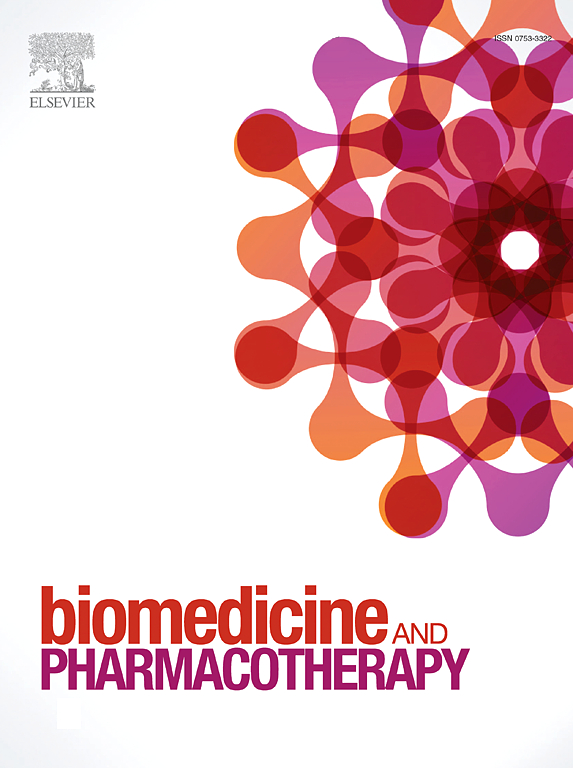Prolonged incubation with Δ9-tetrahydrocannabinol but not with cannabidiol induces synaptic alterations and mitochondrial impairment in immature and mature rat organotypic hippocampal slices
IF 6.9
2区 医学
Q1 MEDICINE, RESEARCH & EXPERIMENTAL
引用次数: 0
Abstract
Cannabis derivatives are among the most widely used psychoactive substances in the world, which leads to growing medical concerns regarding its chronic use and abuse especially among adolescents. Exposure to THC during formative years produces long-term behavioral alterations that share similarities with symptoms of psychiatric and neurodevelopmental disorders. In this study, we have analyzed the functional and molecular mechanisms that might underlie these alterations. Rat organotypic hippocampal slices were cultured for 2 days (immature) or 10 days (mature) in vitro and then exposed for 7 days to THC (1 µM) or CBD (1 µM). At the end of the treatment, slices were analyzed by Western blotting, electrophysiological recordings, RT-PCR, and fluorescence microscopy to explore the molecular and functional changes in the hippocampus. A prolonged (7-day) exposure to THC reduced the expression levels of pre- (synaptophysin, vGlut1) and post-synaptic (PSD95) proteins in both immature and mature slices, whereas CBD significantly increased the expression levels of PSD95 only in immature slices. In addition, THC significantly reduced the passive properties and the intrinsic excitability of membranes and increased sEPSCs in CA1 pyramidal cells of immature but not mature slices. Exposure to both cannabinoids impaired mitochondrial function as detected by the reduction of mRNA expression levels of mitobiogenesis genes such as VDAC1, UCP2, and TFAM. Finally, THC but not CBD caused tissue disorganization and morphological modifications in CA1 pyramidal neurons, astrocytes and microglia in both immature and mature slices. These results are helpful to explain the specific vulnerability of adolescent brain to the effects of psychotropic cannabinoids.
Δ9-tetrahydrocannabinol而非大麻二酚长期孵育可诱导未成熟和成熟大鼠器官型海马切片突触改变和线粒体损伤。
大麻衍生物是世界上使用最广泛的精神活性物质之一,这导致对其长期使用和滥用的医疗关注日益增加,特别是在青少年中。在性格形成时期接触四氢大麻酚会产生与精神和神经发育障碍症状相似的长期行为改变。在这项研究中,我们分析了可能导致这些改变的功能和分子机制。体外培养大鼠器官型海马切片2天(未成熟)或10天(成熟),然后暴露于THC(1 µM)或CBD(1 µM)中7天。治疗结束后,采用Western blotting、电生理记录、RT-PCR、荧光显微镜对切片进行分析,探讨海马的分子和功能变化。长时间(7天)暴露于THC可降低未成熟和成熟切片中突触前蛋白(synaptophysin, vGlut1)和突触后蛋白(PSD95)的表达水平,而CBD仅在未成熟切片中显著增加PSD95的表达水平。此外,四氢大麻酚显著降低了未成熟而非成熟切片CA1锥体细胞的被动性质和膜的固有兴奋性,增加了sEPSCs。暴露于这两种大麻素会损害线粒体功能,这是通过降低线粒体发生基因(如VDAC1、UCP2和TFAM)的mRNA表达水平来检测的。最后,在未成熟和成熟的CA1锥体神经元、星形胶质细胞和小胶质细胞切片中,四氢大麻酚(THC)而非CBD引起组织破坏和形态改变。这些结果有助于解释青少年大脑对精神药物大麻素影响的特定脆弱性。
本文章由计算机程序翻译,如有差异,请以英文原文为准。
求助全文
约1分钟内获得全文
求助全文
来源期刊
CiteScore
11.90
自引率
2.70%
发文量
1621
审稿时长
48 days
期刊介绍:
Biomedicine & Pharmacotherapy stands as a multidisciplinary journal, presenting a spectrum of original research reports, reviews, and communications in the realms of clinical and basic medicine, as well as pharmacology. The journal spans various fields, including Cancer, Nutriceutics, Neurodegenerative, Cardiac, and Infectious Diseases.

 求助内容:
求助内容: 应助结果提醒方式:
应助结果提醒方式:


